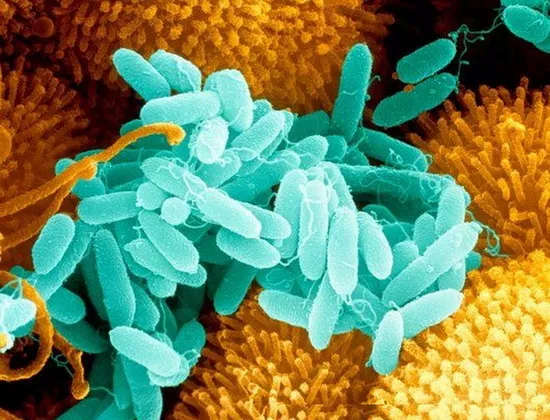Pseudomonas aeruginosa (Pseudomonas aeruginosa) is a gram-negative bacterium that is widespread in the environment and can cause various infections in humans, animals and birds. In this article we will consider the main properties of Pseudomonas aeruginosa and its effect on the body. During the next experiment on the use "Bonaka-APK-N", we investigated the system of watering birds. A pathogenic culture of Pseudomonas Aeruginosa (Ps. Aeruginosa) was found in the selected water samples from the watering system.
Pseudomonas Aeruginosa is an aerobic microorganism, but it can also grow in microaerophilic conditions. It is able to reproduce in a wide range of temperatures (from 4 to 42 degrees Celsius) and pH (from 5 to 9).
Pseudomonas aeruginosa is a conditionally pathogenic bacterium, that is, it can cause infections only under certain conditions, such as weakening of the immune system, violation of the integrity of the skin or mucous membranes.
The main factors of the pathogenicity of Pseudomonas aeruginosa are:
- Production of exotoxins, such as pyocyanin, pyoverdin and exotoxin A, which cause cell damage and, as a consequence, inflammation;
- Formation of biofilms that protect bacteria from the action of the immune system and antibacterial drugs;
- High antibiotic resistance due to the presence of numerous resistance mechanisms.
Pseudomonas aeruginosa can cause a wide range of infections, including:
- Pneumonia;
- Urinary tract infections;
- Skin and soft tissue infections;
- Acute and chronic otitis media;
- Keratitis and conjunctivitis;
- Sepsis and bacteremia.
Treatment of infections caused by Pseudomonas aeruginosa is difficult due to the high resistance of the bacterium to antibiotics.
The main measures for the prevention of infections caused by Pseudomonas aeruginosa are:
- Compliance with hygiene;
- Vaccination and immunomodulation to strengthen the immune system;
- Rational use of antibiotics to prevent the development of resistance.
The use of probiotics has given good results when growing poultry in such conditions. "Bonaka-APK-N" displaced the pathogenic culture, did not allow it to develop in large quantities.
The study of microbiocenosis indicators showed that birds from the experimental group had fewer prerequisites for the development of digestive disorders and related metabolic disorders and a decrease in colonization resistance, and, consequently, more pronounced resistance to intestinal pathogens. In the broilers from the experimental group, the number of symbiont bacteria (lactic acid and bifidobacteria) was 13-14 times greater, and the number of opportunistic pathogens (Escherichia, staphylococci and enterococci) was 16-260 times less than in their peers from the control group.
Studies have shown that broilers from the experimental group are more immune reactive, since they had more specific post-vaccination antibodies under the same conditions than birds from the control group.
The poultry of the experimental group, in comparison with the control group, where the probiotic was not used, showed greater preservation and better clinical condition, which may be manifested by greater resistance to various diseases and the realization of genetic potential.
